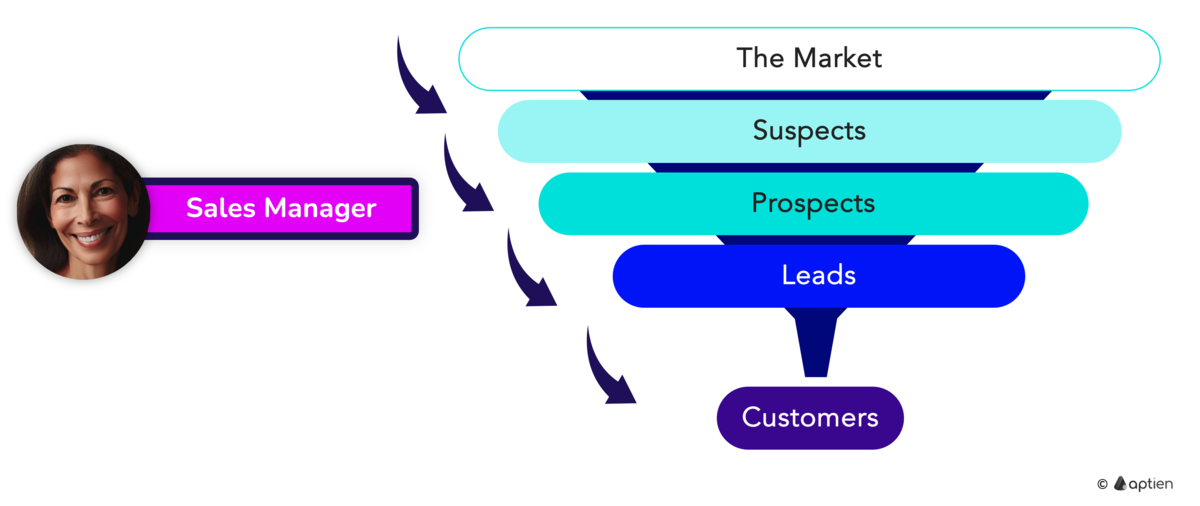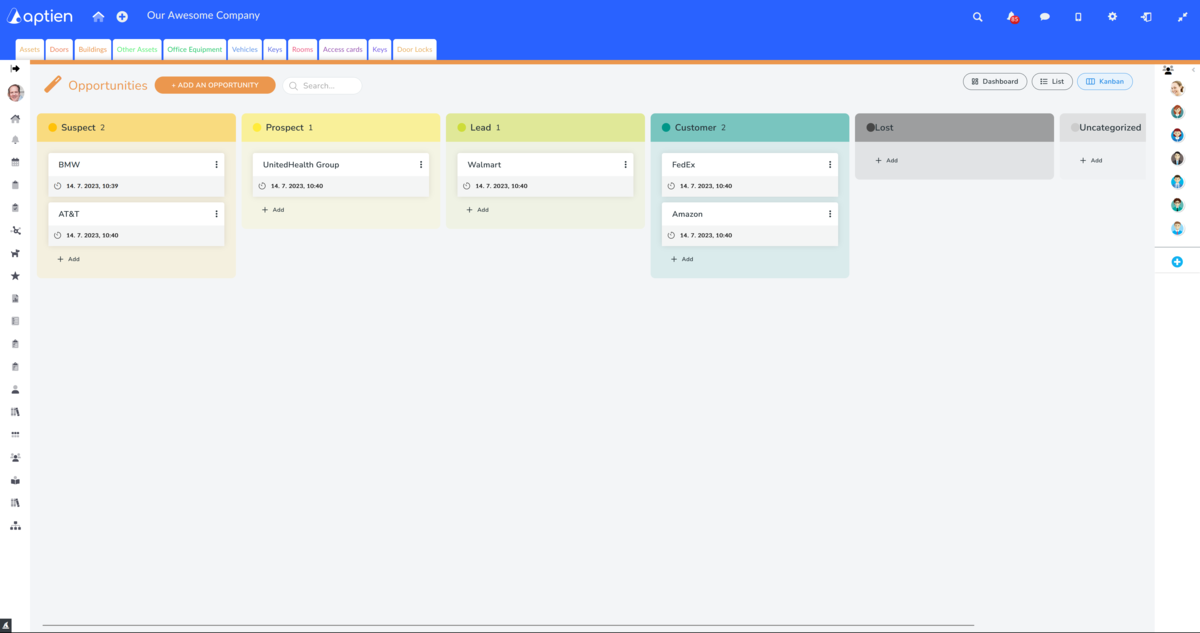Business Funnel Explained in Simply in One Sentence
- A sales funnel is a visual way to show the steps you take to turn leads into paying customers, guiding them from first touch to final sale.
What a Sales Funnel Means for Small and Growing Businesses
A Sales Funnel is a tool for managing the sales process and the individual stages a customer goes through.
- A sales funnel is a visual representation of the stages potential customers go through.
- It also describes the sequence of steps (process) a customer takes from initial contact to purchase and, potentially, loyalty.
- It helps to systematically approach, persuade, and acquire customers.
- It's wide at the top (many prospective leads) and narrows down (fewer actual customers).
- It connects marketing activities when reaching out to the customer and sales when acquiring the customer.
- It is the basis for a sales pipeline.
How a Sales Funnel Works in Practice
The sales funnel is part of CRM systems, such as Aptien CRM, where it helps to sort potential customers - those who could potentially be interested in your products or services. Essentially, it guides salespeople in their sales activities.
- First, you identify and reach out to potential customers in the market.
- You then try to convince them, using sales techniques, to become your customers.
1. Target Market
- We're identifying potential customers and interested parties within the market segment.
- We actively engage the target market through marketing, advertising, PR, and other promotional activities.
2. Suspect - Potential Customer
- This is a customer we've identified who we believe might need our product.
- They aren't yet aware of us, and we're reaching out with an offer or marketing.
3. Prospect - Interested Potential Customer
- This is a potential customer who has shown some initial interest in our offering.
- For example, they might have visited our website or stopped by our location.
4. Lead - Qualified Potential Customer
- A lead is a potential customer who is seriously interested in our product.
- They've shown active interest, and our goal is to convert them into a paying customer.
5. Customer
- A customer is someone who has purchased our product.
How to Work with a Sales Funnel
Sales representatives move potential customers in individual stages according to the development of negotiations. At each stage, the probability that the suspect will become a customer increases.
- The merchant enters a potential customer (suspect) that he has looked for
- It moves from phase to phase according to probability and reactions
- It uses ratings and gradually qualifies potential customers
- The success rate of moving from one stage to another is called conversion

